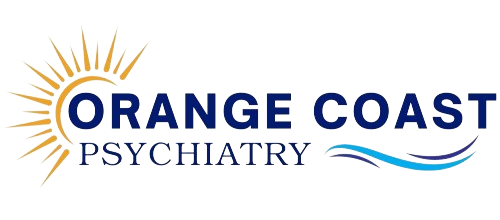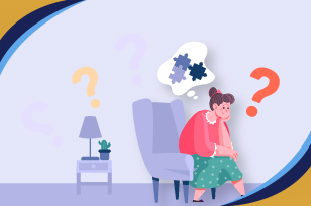Anosognosia is defined as a neurological condition or a medical symptom that is characterized by a lack of knowledge or awareness of one’s own disease or deficit. The brain itself rejects, lies with excuses, or denies reality when it conflicts with a person’s self-image or past experiences.
This is related to neurons, not psychology. However, some psychiatric conditions might be involved in this.
When someone denies the diagnosis of a mental disorder, it’s like he is in denial. But this is like someone with acute mental illness, in which a person may not be clearly thinking of their condition and consciously choose denial.
This might be because they are not aware of their disease, or there is a lack of insight or awareness. However, the formal medical term for this condition is anosognosia.
The term was coined from the Greek words “a” meaning (without or absence), “nosos” (disease), and gnosis (knowledge), and comes as “without knowledge of disease”.
The term stems from brain dysfunction, and not psychological denial, stubbornness, or a coping mechanism.
The Key Aspects Of The Definition Of Anosognosia
Different From Denial
This is something different from denial. Anosognosia is generally different from psychological denial, stubbornness, or a coping strategy.
Rather than simply refusing to diagnose, persons with anosognosia are genuinely unaware of their condition or its severity due to brain dysfunction.
The brain can lie to them or can invent explanations to fill memory gaps, an excuse to lose abilities, or deny reality when it conflicts with their self-image or past experiences.
This makes it an anatomical condition rather than psychological in origin.
Core Characteristics
People with anosognosia often have no idea that there is something different in their mental condition, change, or decline. There are also behavioral or functional changes in their brain.
They may deny symptoms of anosognosia and invent illogical explanations to maintain their sense of self. Their level of awareness can also fluctuate over time. For example, a person with schizophrenia might believe that they hear voices of divine messages, while a person with bipolar disorder believes that lack of sleep is related to being more productive.
Read More: How Psychiatric Support Can Help Executive Dysfunction
The causes of anosognosia
This is the cause of the underlying brain mechanism. It is thought to be caused by changes or differences in brain structure that often happen due to brain damage.
The frontal lobe is responsible for memory, problem-solving, metacognition, and forming a self-image. This is particularly associated. Damage to this area prevents the brain from updating a person’s self-image to include their illness.
Right hemisphere
Many studies have shown a relationship between damage or decreased capacity in the right hemisphere. This is observed in stroke survivors and persons with severe mental illness.
Prefrontal and Insular Cortices
Structural neuroimaging in schizophrenia patients has shown abnormalities primarily in the prefrontal and insular cortices.
Other specific areas impacted include the inferior temporal lobe, dorsal lateral prefrontal cortex, and inferior parietal lobe.
Normally, anosognosia is a deep neurologically based unawareness of one’s own illness or deficit that leads to significant challenges in diagnosis, treatment, and daily life functioning.
Read More: Knowing The Stages Of Depression For Better Living
Associated Conditions
Anosognosia is a major feature in both severe mental disorders and neurological illnesses.
Schizophrenia
Schizophrenia and other psychological disorders are associated with anosognosia. The data suggests that it affects 50% to 98% of people, and 30% of people severely lack insight into their illness.
The Diagnostic and Statistical Manual of Mental Disorders (DSM-5) lists the lack of insight or awareness of their disorder as an associated feature that supports a schizophrenia diagnosis.
Bipolar Disorder
This is also linked to anosognosia, which affects approximately 40% of people, and severe unawareness in about 20%. Awareness about bipolar disorder may vary over time.
Major Depressive Disorder
This can also present with anosognosia and especially during severe depressive episodes.
Alzheimer’s Disease And Other Dementias
These are common causes, with around 81% of Alzheimer’s patients experiencing some degree of anosognosia. It tends to worsen as the disease progresses.
Stroke
Right-brain stroke is strongly related to anosognosia for deficits such as left body paralysis, visual disturbances, memory, and cognitive issues.
Besides the above, this condition can be present in other focal brain injuries like multiple sclerosis and Parkinson’s disease.
Read More: What Shapes Your Character? Know About Your Personality Archetypes

Forms Of Unawareness In Anosognosia
The unawareness can be confused with various other forms, like:
Anosodiaphoria
This is a lack of emotional concern for deficits that are verbally acknowledged.
Causal Attribution Abnormality
Although a person acknowledges the condition, he might not think of it as a neurological issue, as he associates it with tiredness instead of weakness.
Understood Awareness
This is a form of awareness in which a person consciously rejects a deficit while behavior still indicates awareness, like claiming the ability to walk but never trying to get out of bed.
Without Complete Awareness
A person may be completely explicit and implicit about rejecting the deficits.
Read More: What Are Grandiose Delusions & How To Treat Them?
Treatment Suggestions For Anosognosia
Treatment for anosognosia is complex and often integrated with the management of the underlying conditions.
Although there is no single specific treatment method for anosognosia itself, there are various interventions, especially for the associated mental health and neurological disorders. It can help improve insights and manage its effects.
This condition commonly occurs with schizophrenia, bipolar disorder, Alzheimer’s disease, and stroke.
Treatment of these primary conditions can lead to improvements in anosognosia.
Early Psychosis Interventions
This treatment involves social workers, peer specialists, and other care providers, who have shown promise in improving insight in people who are experiencing their first episode of psychosis.
The most significant increase typically occurs within the first six months of joining the sessions.
Antipsychotic Medications
These are first-line treatments for conditions like schizophrenia. The evidence suggests that antipsychotic drugs and medications can improve insight, with the most notable period in the first three months of treatment.
Successful treatment of psychotic symptoms often leads people to no longer believe their psychotic experiences were real.
This clinical stability, while not directly having an impact on cognitive performance, can be a prerequisite for gains from learning based therapies.
Read More: Online Psychiatrists Give The Same Care as In-House Psychiatrists
Psychological and Behavioral Interventions
Many psychotherapeutic and behavioral strategies aim to improve sight and treatment, such as:
Cognitive Therapy
This can be a long-term treatment option to help people gain a better understanding or awareness of their condition and learn to manage symptoms of anosognosia.
Metacognitive Training and Reflection, and Insight Therapy
These therapies target introspective bias (IB), which is the tendency to overestimate abilities or underestimate task difficulty.
They focus on teaching people to recognize the possibility of thoughtful inaccuracy and address the predominant positive IB.
Cognitive Behavioral Therapy for Psychosis (CBTp)
This is listed as a psychological intervention that can help improve insights into people with SMI.
Motivational Interviewing
This technique can help people with anosognosia improve their symptoms with medication and treatment adherence.
Mindfulness-Based Treatments
This is also recognized as a psychological intervention to improve insight.
Social Cognition Interaction Training (SCIT)
A group treatment of psychotic disorders is designed to improve social cognitive methods, such as emotion perception, theory of mind, hostile attribution, and jumping to conclusions.
It has shown improvements in these areas and a reduction in aggressive incidents in some settings. Although treatment adherence is crucial. This training at least requires a basic awareness of the disorder.
Read More: Knowing Anxiety Levels For A Helpful Treatment
Why is insight needed in anosognosia?
For a person who is experiencing anosognosia, this insight feels as real and considerable as other people’s ability to perceive themselves.
But these confusions cause conflict with others and increase anxiety. Lack of knowledge about the disease and its symptoms can typically cause people to avoid treatment.
This makes patients stop taking their medication and get proper treatment. The treatment is often combined with psychosis and mania symptoms. However, lack of insight can cause reckless and undesirable behavior.


















